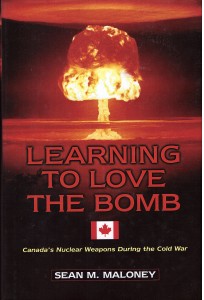
The first comprehensive historical (or otherwise) treatment of Canada’s nuclear weapons story. Despite attempts by Canadian bureaucratic and cultural mavens to downplay or even suppress the historical facts, Canada’s armed forces deployed a dramatic array of nuclear capabilities during the first half of the Cold War. Indeed, by 1964, Canadian strike aircraft could deliver megaton-yield hydrogen bombs onto their targets in eastern Europe if the Cold War went “hot”, and at least five other Canadian nuclear systems were deployed to defend North America. Though information on technical bits and pieces has leaked out over the years, exactly how and why Canada nuclearized has never been examined to the level of detail in this work. Learning to Love the Bomb explores, using vast amounts of declassified material, Canada’s subtle and at times nearly covert attempts to build a nuclear capacity in the face of radically shifting alliance nuclear strategy, technological change, and domestic political turmoil. From Canadian involvement in nuclear testing, to influencing NATO strategy for national purposes, to examining the possibility of constructing her own nuclear weapons and even surreptitiously modifying Canadian aircraft to deliver American nuclear bombs, the emergent picture is one at odds with the current mythology which is today influencing the Canada-US relationship. The reality is that Canada was at one time an influential power and had an extremely close partnership with the United States: this relationship rested on the need to deter and if necessary defeat an imminent Soviet nuclear attack on the continent and in Europe. And, most importantly, the role of nuclear weapons was the bedrock of this relationship. The climax of Learning to love the Bomb delves into new information on Canada’s secret role in the Cuban Missile Crisis of 1962.
Journal of Military History review HERE/
Air Power History review HERE/
Canadian Military Journal review HERE
Available from: